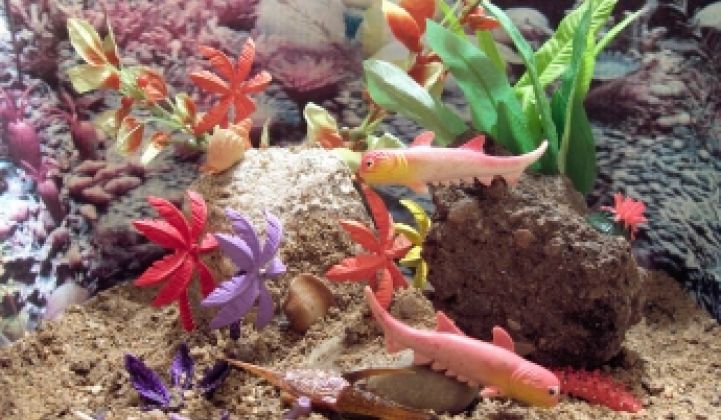It's a step forward for solar and a step backward for industrial microbiology.
Cambrios Technologies announced today that it will work with Ascent Solar Technologies to improve the performance of copper indium gallium selenide (CIGS) solar cells under a contract for the U.S. Army. Cambrios has devised a material called ClearOhm that effectively lets approximately 3 percent more light through to the active solar material and thereby improves the power output and efficiency of a solar cell.
As an added bonus, ClearOhm can be applied with fairly simple deposition processes, which should reduce the cost of adding it to CIGS cells, according to Cambrios CEO Mike Knapp.
"We are pursuing the transparent conductive material market," he said. Ascent specializes in CIGS cells on plastic substrates so these solar cells will also be plastic.
ClearOhm, however, is made through conventional chemistry processes, he said. This represents something of a departure for Cambrios, which grew out of biological research conducted by MIT professor Angela Belcher and University of California professor Evelyn Hu. The idea was that Cambrios would create generation after generation of genetically modified viruses and other microorganisms to see what sort of materials these organisms could produce or whether or not the organism could itself be used as a component. The bugs, in other words, would replace a lot of the work historically performed by lab technicians or even chemical factories. The company name derives from the evolutionarily active Cambrian period.
Cambrios pursued biological and chemical production techniques for ClearOhm. "The chemistry method just came out faster," Knapp said.
Cambrios, in fact, spun out the biological parts of its business back in 2007 into a company called Siluria Technologies, he said. Siluria raised $3.3 million in 2009 but remains somewhat secretive. (See coy website here.) Cambrios raised $14.5 million last year in a Series D round, but to date the company hasn't spent much energy on describing how it spun off Siluria. The spin-off was noted in an SEC filing for Siluria, but Cambrios never issued a press release explaining the mechanics of the split or addressing the fact that it no longer pursues microbiology. Still looking, but I haven't found a mention of Siluria on its website yet.
So those guys in the picture? Working at a new company.
Belcher, by the way, continues to pursue industrial microbiology. Her MIT research team has come up with viruses that can help assemble battery anodes or split water.



